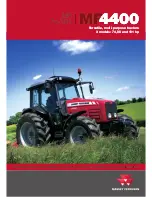
INTRODUCTION
Wear a respirator when using sandblasting equipment, working with asbestos-based materials, or using spraying
equipment.
Glues
See Adhesives and sealants.
Oil test equipment, lubrication test equipment, and high-pressure air test equipment, in
accordance with local legislation
See Lubricants and greases.
Always keep high-pressure equipment in good condition and carry out regular maintenance, particularly on connec-
tions and fittings.
Never point a high-pressure nozzle at the skin because the fluid can penetrate the subcutaneous tissue etc. and
cause serious injury.
LEGAL ASPECTS
Various laws and regulations lay down the health and safety requirements for working with materials and equipment
in workshops. Always observe the regulations and laws in force in the country in which you are working.
Workshops must have detailed knowledge of the relevant regulations and laws. Consult the local supervisory author-
ities or related government bodies if you are in any doubt.
LUBRICANTS AND GREASES
Avoid prolonged or recurrent contact with mineral oils, particularly used oils. In general, used oils contaminated during
maintenance (e.g. reservoir oils from routine changes) are more irritating and have more serious effects, including
skin cancer if contact is extensive and prolonged.
Thoroughly wash the skin after tasks using oil. Exclusive hand washers can be very useful because they are removed
with water. Do not use gasoline, paraffin, or other solvents to remove oil from the skin.
Lubricants and greases can cause mild eye irritation.
You must avoid repeated or prolonged skin contact by wearing protective clothing where necessary. You must take
particular care with used greases and oils that contain lead. Do not allow your work clothes to become contaminated
with oil. Wash or dry clean work clothes regularly. Discard oil-soaked shoes.
Do not use used engine oil as a lubricant or for applications where it might come into contact with the skin. You may
only discard used oil in accordance with local legislation.
Soundproofing materials
See Foams and Fiber insulation.
PAINTS
See Solvents and Chemicals – general.
Highly flammable, flammable.
One package. May contain pigments, drying agents, and other harmful or toxic components, as well as solvents.
There must be adequate ventilation when you are spraying.
Two packages. May also contain unreacted resins and resin hardening agents that are toxic and harmful. You must
observe the manufacturers' instructions. See also Section 5 on resin-based adhesives, isocyanate-based adhesives,
and foams.
You should preferably perform spraying applications in a ventilated cab with an exhaust system removing the fumes
and spray from the breathing area. Individuals working in cabs must use respiratory protection. Personnel carrying
out small-scale repair work must use respirators with an air supply.
Paint solvents
See Solvents.
Gasolene (Petrol).
See Fuels (gasoline).
47402793 23/04/2014
18















































